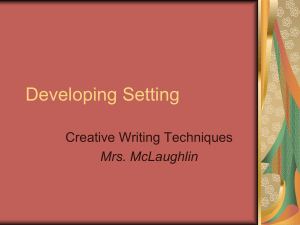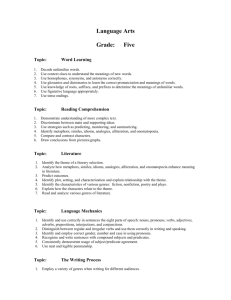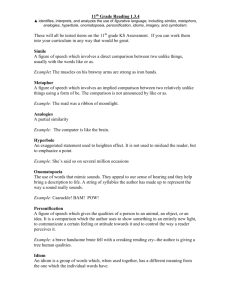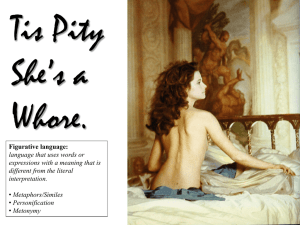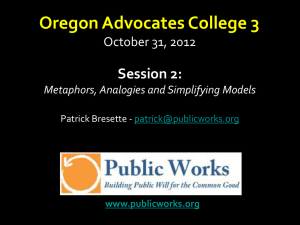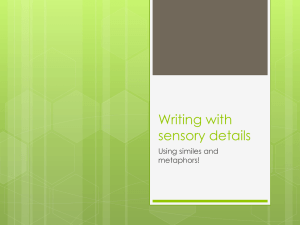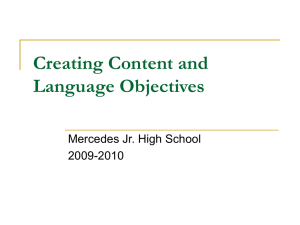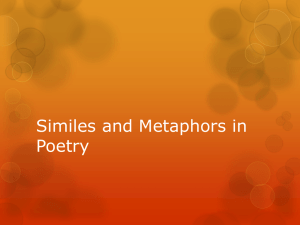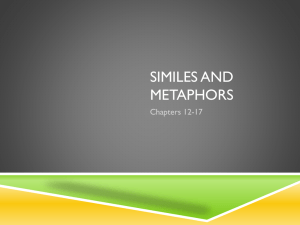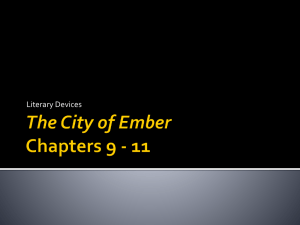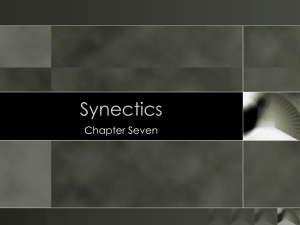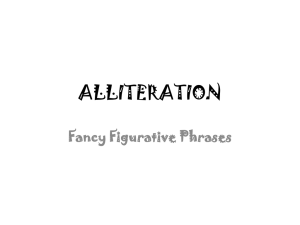World of Literary Terms
advertisement
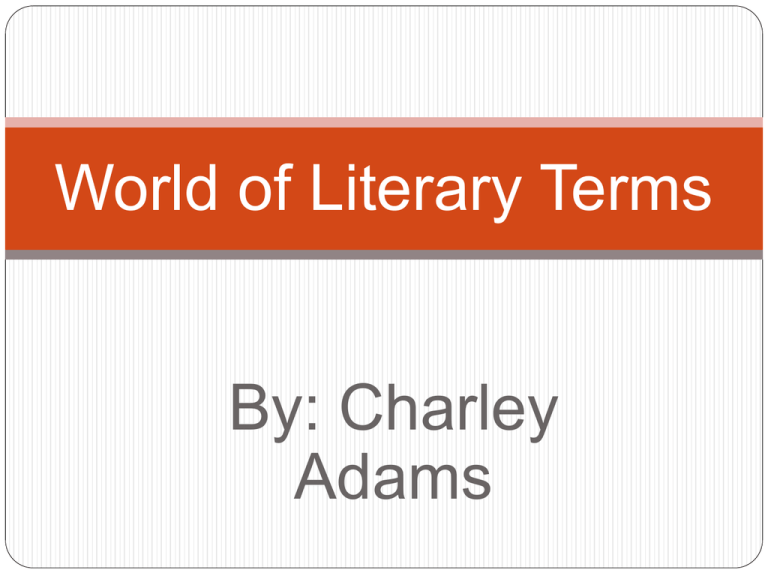
World of Literary Terms By: Charley Adams Analogies, Metaphors &, Similes Analogies are similes and metaphors in a way. Analogies are different because analogies describe the relationships between two things. Example: His thoughts tumbled in his head, making and breaking alliances like underpants in a dryer without Cling Free. Analogies, Metaphors &, Similes Continued Similes compare two things that are nothing alike using like or as. Example: His temper was as explosive as a volcano. Analogies, Metaphors &, Similes Continued Metaphors are an analogy that is not implied comparing two things that are similar. Example: I'm dead tired, She's the apple of my eye. Alliterations & Assonances Alliterations are repetition of initial sounds in the same phrase. Example: Peter piper picked a peck of pickled peppers. If peter piper picked a peck of pickled peppers how many peppers did peter piper pick? Assonances are the repetition of the same vowel sound in the same phrase or sentence. Example: He gave a nod to the officer with the pocket. Idioms & Hyperbole Idioms are phrases that aren’t suppose to be taken seriously. example: break a leg, or your full of bologna. Hyperboles are an exaggeration. Example: I am so hungry I could eat a horse and a cow. Personification , Onomatopoeia &, irony Personification is where the writer gives a non human thing human characteristics. Example: the trees waved at me while I was walking through the park. Onomatopoeia is a sound used to describe action. Example: “pow”, “pop”, “smack”, or “bang” Personification , Onomatopoeia &, irony continued Irony is The use of words to express something different from the literal meaning. Example: The Ludites, an antitechnology group, launching a website to spread their ideas. Author’s purpose, theme &, mood Author’s purpose is why they wrote the text being to inform, persuade, or entertain. Theme is the major idea broad enough to cover the entire story. Mood is The emotional state of mind expressed in work. Flashback & foreshadowing Flashback is when you look back on what happened in the past. Foreshadowing is clues to what will happen in the future. inference &, connotation Inference is a prediction that you cant take straight out of the text. Connotation is the emotional relationships suggested by group of words which affects the interpretation. Allusion, subplot &, parallel episode Sub plot is stories within a story that expands the characters, setting, or theme. Allusion is an indirect reference to the event, person, place or artistic work Allusion, subplot &, parallel episode continued A parallel episode are events that happen at the same time without the main characters awareness. Documentation I got my information from a literary term worksheet from one of the teachers. I got my ideas for my examples from the internet. Teacher use This PowerPoint was useful in the classroom. the teacher really liked it I had to change a couple of things after he showed.
